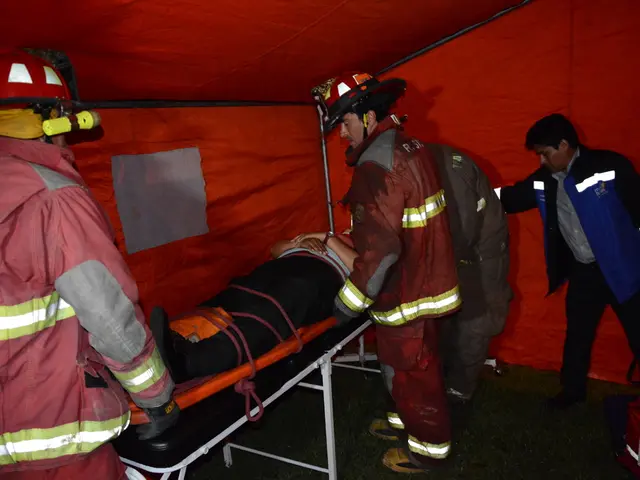Differentiation between Age Spots and Skin Cancer: Recognizing the Signs
Age Spots and Skin Cancer: Identifying the Differences
Age spots, also known as solar lentigines or liver spots, are harmless pigmented patches that commonly develop on the skin as a result of sun exposure. They can resemble certain types of skin cancer, causing concern. Recognizing the key differences between age spots and skin cancer is essential for early identification and intervention when necessary.
Both conditions tend to appear on sun-exposed areas, such as the face, hands, and shoulders, but it is crucial to understand the distinguishing characteristics. Key differences include texture, color, and placement.
Age Spots
Age spots are small, flat, and smooth, usually appearing yellow, brown, or gray. These spots have well-defined, often circular, borders, and range from a few millimeters to several centimeters in size. Unlike skin cancer, age spots do not itch, feel crusty, or change over time. They form due to increased melanin production in response to UV radiation to protect the skin. While more common in light skin, age spots can develop on any skin color and usually emerge from middle age onwards.
Skin Cancer
Skin cancer is a type of cancer that can be confused with age spots due to similar appearances and locations. Skin cancer occurs as a result of damage from UV radiation or other factors, causing skin cells to mutate and grow at an accelerated rate. Unlike age spots, skin cancer can be harmful and potentially spread to other parts of the body.
There are several types of skin cancer, with the most common being basal cell carcinoma, squamous cell carcinoma, and melanoma. Skin cancer symptoms may include irregular shapes, blurred or ragged edges, changes in size, color, or shape, multiple colors on the same spot, and pain, itching, bleeding, or crusting. Actinic keratosis—a precancerous growth caused by UV radiation damage—may also be mistaken for an age spot and can lead to skin cancer, making regular skin checks essential.
Comparing Symptoms
Distinguishing age spots from skin cancer can help in recognizing when medical advice is required. Compare the typical symptoms of age spots and skin cancer below.
Age Spots
- Flat and smooth
- Yellow, brown, or gray
- Defined borders
- Size varies from a few millimeters to several centimeters
- Sun-exposed locations
- May fade in winter and become more pronounced in summer
Skin Cancer
- Irregular shape and blurred or ragged edges
- Changes in size, color, or shape
- Multiple colors on the same spot
- Raised, pink, red, purple, black, or brown coloring
- Pain, itching, bleeding, or crusting
- Scaley or crusty patches
When to Contact a Doctor
Monitor any new or changing marks on the skin and consult a healthcare professional if any potential signs of skin cancer or actinic keratosis appear. Diagnosing skin cancer early can improve treatment outcomes.
Contact a doctor if:
- A mark does not heal within four weeks.
- The mark changes in color, shape, size, or location.
- The mark looks different from other marks on the skin.
- The mark itches, crusts over, scabs, or bleeds.
Diagnosis and Treatment
A doctor can diagnose age spots by examining the spot physically, considering its appearance, texture, and placement. A skin biopsy may be performed if there is uncertainty. Treatment for age spots is generally not necessary as they are not harmful, but some individuals may choose to reduce their appearance through various methods, such as creams, lotions, laser treatments, cryosurgery, microdermabrasion, or chemical peeling.
Skin cancer treatment varies depending on factors like the type and stage of cancer and individual circumstances. Common treatment options include surgical removal, topical therapies, radiation therapy, chemotherapy, immunotherapy, and systemic medication.
Key Differences and Summary
Age spots, skin cancer, and actinic keratosis can appear similar but have notable differences. Factors such as size, shape, texture, and color help identify each condition.
Early detection is vital for effective skin cancer treatment, so it is crucial to consult a dermatologist about any suspicious changes in the skin. Age spots do not require treatment but can be addressed for cosmetic reasons.
- Age spots, while similar in appearance to certain types of skin cancer, are distinct due to their flat and smooth texture, defined borders, and consistent coloring (yellow, brown, or gray).
- Skin cancer, on the other hand, can be harmful and potentially cancerous, exhibiting irregular shapes, blurred or ragged edges, and changes in size, color, or shape over time.
- In addition to melanoma, other skin cancers like basal cell carcinoma and squamous cell carcinoma may resemble age spots, but they can manifest as raised, pink, red, purple, black, or brown coloring, scaley or crusty patches, and may cause pain, itching, bleeding, or crusting.
- To ensure proper health and wellness, dermatology professionals should be consulted when suspicious changes in skin-conditions occur, especially if a mark does not heal within four weeks, changes in color, shape, size, or location, looks different from other marks on the skin, or if it itches, crusts over, scabs, or bleeds.
- Science and medical advancements are continually improving the early identification, diagnosis, and treatment of both age spots and skin cancer, with dermatology playing a crucial role in raising awareness and promoting skin-care best practices for all seniors and others facing medical-conditions.








